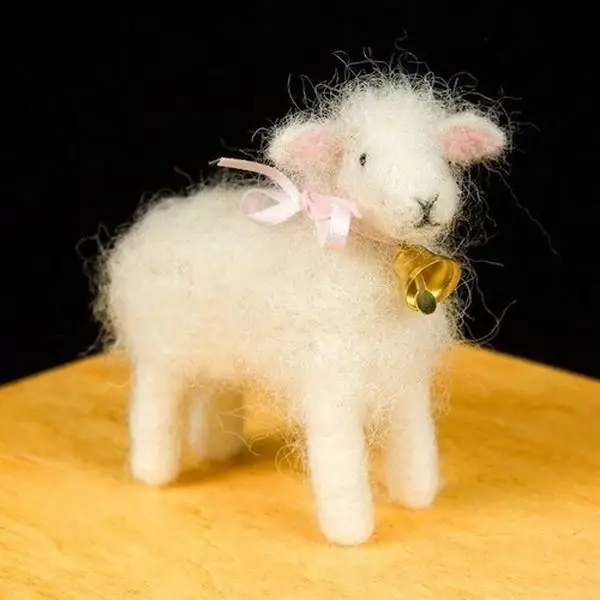The ability to do something with your own hands has been appreciated at all times. A person with a hand-made technique will always be able not only to satisfy the needs for creativity and self-expression, but also to earn a piece of bread.

Felting and its types
Many peoples have used the ability of wool to felle and form a dense mass, which is felt. This improvised material served as the basis for the manufacture of shoes, bags, hats, carpets and even dwellings - yurts.
Currently, felt is not so widely used, but it is an excellent and main tool for a new, but already popular type of needlework. Felting - felting, felting, wool stuffing. Amateurs and professionals distinguish two types of this handicraft: dry and wet.
The wool fibers are pierced with special needles, resulting in a felt. With the help of dry felting, three-dimensional products are obtained: jewelry, toys, sculptures. Felting lovers can create a beautiful and original landscape by nailing wool fibers to dense fabric.
Wet felting is the use of hot soapy water together with physical action on the material, which is carried out using a grinder, hands or rolling pin.
The combination of the two types of felting turns the work into a real work of art. Pre-felting of wool, before wet felting, allows you to achieve accurate image fixation. It is no coincidence that felting is often found in painting. A rich color palette is achieved by mixing several pieces of wool of different shades.
Dry felting technique
Take a piece of wool, which is shaped into the model being made. Then the resulting figure is placed on foam rubber. A piece of wool is pierced with a needle, which is carefully turned at the moment of puncture. As the product is compacted, the larger needle is changed to a smaller one.
Compliance with safety measures is a prerequisite in felting. Craftsmen use thimbles and do not hold the item by weight, but create their works on a hard surface.
Provided that the manufactured model will consist of several elements, each is felted separately, and then applied to each other. To achieve manufacturing accuracy, individual parts are pre-stitched, and the threads are hidden under the wool.
Felting mistakes are not a big deal as they can be easily eliminated by carefully adding a certain amount of wool.
Technique of wet figurine felting
The soap solution is sprayed onto the wool and rubbed in different directions. With this technique, cellophane gloves are usually used, with the help of which a high glide quality is achieved.
Large-sized figurines are rolled on a roll. The rug with the future product is wound on a rolling pin and wrapped with tape and, with light pressure, begin to roll the model. Then rinse in warm water and put on the wire rack without squeezing.
Iron the finished product if necessary. An important point is not to overdo it in the ironing process. Otherwise, the wool is felted.






